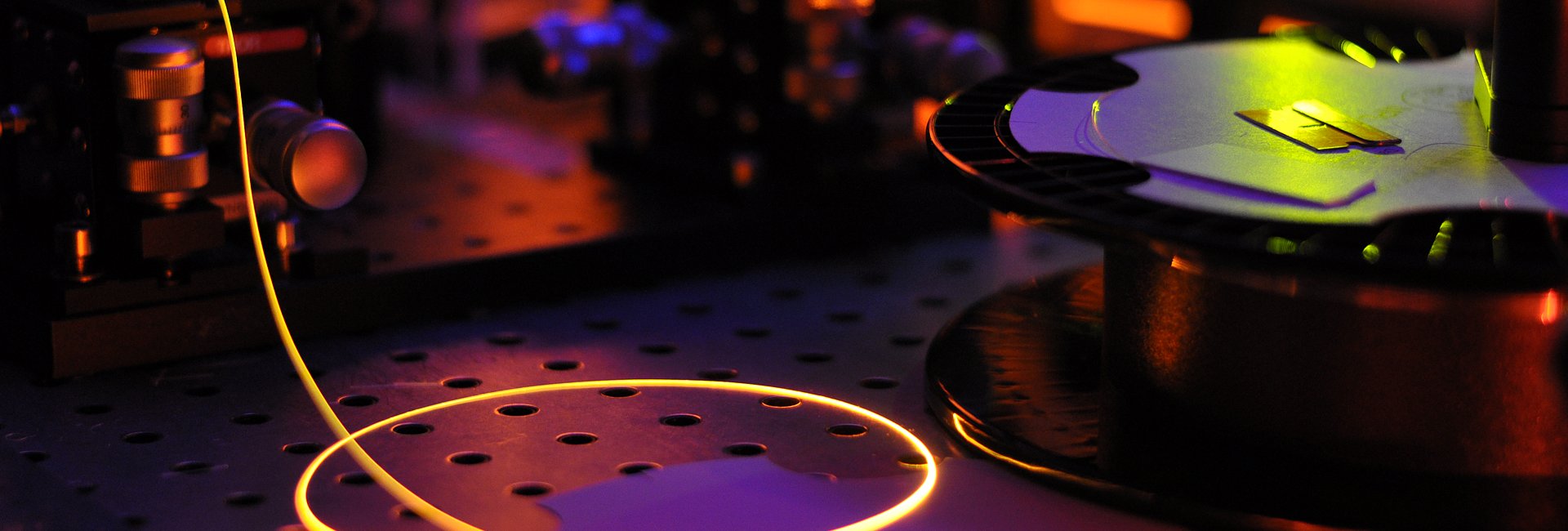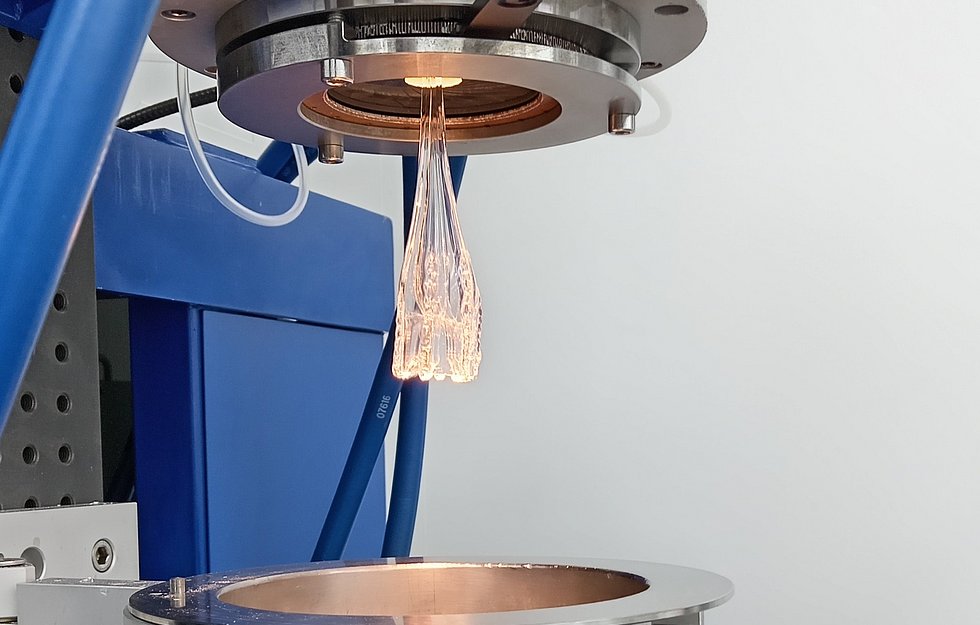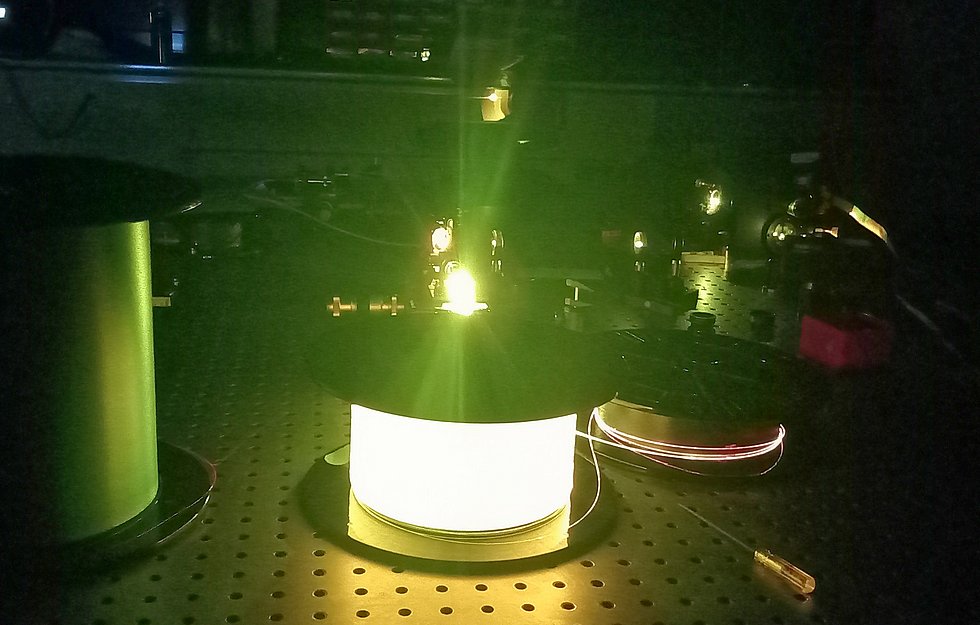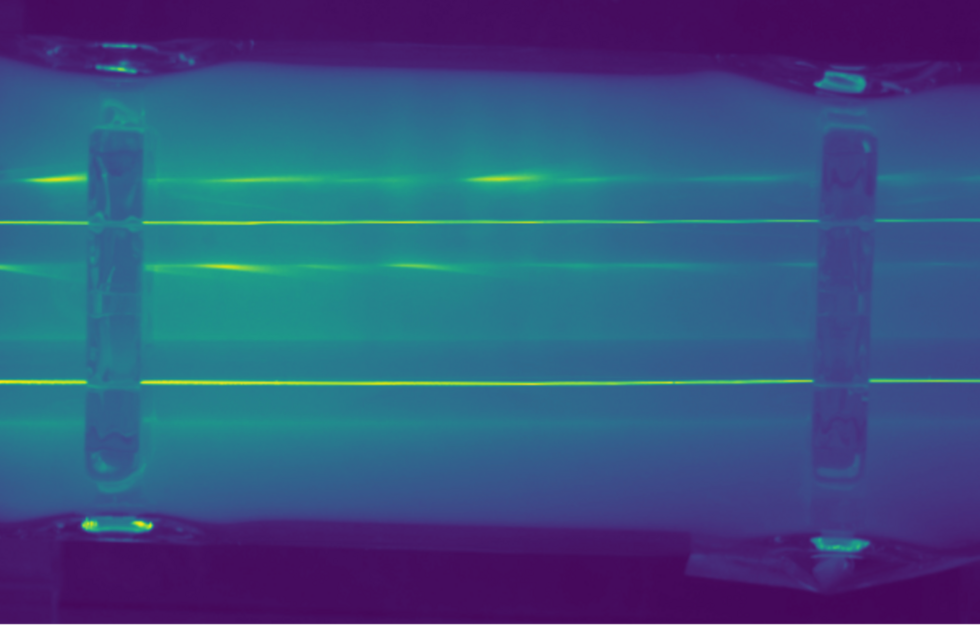Welcome to the Research Group Microstructured Optical Fibres
Our independent research group was established in 2021 and focuses on developing new photonic tools based on photonic crystal fibres.
These microstructured fibres can either have a solid-core through which the light is guided, or a hollow-core. In the latter, the guiding core can serve either as a microfluidic channel, yielding strong light-matter interaction with the filling fluid, or as a protected environment into which trapped particles can be guided. In close collaboration with the fabrication team of the MPL, we design and fabricate special microstructured fibres for our experiments and for international collaborations with groups in France, Canada and Spain among others.
The group, comprising researchers from multiple countries, explores both fundamental topics such as the magnon-photon interaction in a magnetic levitated sphere trapped in a hollow-core fibre, or the generation of non-classical light, and more applied uses of the fibers which can be utilized for in-situ monitoring of chemical reactions.
Exploiting photonic crystal fibres for fundamental and applied applications
Hollow-core photonic crystal fibres (HC-PCF) allow to guide light in a diffractionless manner while being filled with either gas or liquid. The waveguide properties enable guidance over long distances allowing a good light-matter interaction. When filled with monatomic gases, gas-filled fibres are a versatile system for quantum optics. Tuning the pressure allows adjusting the dispersion landscape of the system, yielding the generation of selected wavelengths through phase matching conditions. Additionally, using monatomic gases as the gain materials prevents the detrimental contribution of the Raman scattering, which hampers the source of nonclassical light by degrading the correlation between sidebands generated by four-wave mixing. Over the last decade, we have exploited such a system to generate twin beams of correlated photons and, more recently, a tunable pair of photons bridging UV and IR bands.
In collaboration with the group of Maria Chekhova, we also investigate the possibility of generating a triplet photon state in an optical fibre. This process can be viewed as the quantum counterpart of the third harmonic generation, yielding 3 daughter photons from a unique photon. Direct third-order spontaneous down conversion has not yet been demonstrated in the optical domain and remains a significant challenge in which the technology of optical fibres could prove a valuable asset.
Instead of trying to avoid Raman scattering at all costs, we recently demonstrated that a well-prepared coherent pattern of molecular vibrations in di-hydrogen could yield linear conversion of single photons. In doing so, the fragile quantum correlation present in the original entangled pair was preserved up to 70% conversion efficiency. This technique could be used to convert photons from visible wavelength bands to telecoms wavelength for instance.
Filling the fibre with Rb is another interesting possibility of use. Together with the 5th Institute of Physics in Stuttgart, we set up an experiment where HC-PCF is filled with Rb-atoms to serve as a platform dedicated to Rydberg physics at ambient temperature.
More recently, In the classical regime, we have used HC-PCF to propel silica particles inside its ‘empty’ core. The flying particles in this scenario can then be used for temperature sensing. Using ferrimagnetic YIG, this could also be used as a sensitive magnetic sensor. We observed that one single µm-diameter YIG trapped inside the core of an HC-PCF could yield the rotation of the direction of the linear polarization of an input beam as a response of an external magnetic field. The ultimate goal of this new platform is to explore the magnon-photon interaction at the single-photon level.
In a less fundamental use, HC-PCF is perfect for in-situ monitoring of chemical reactions. By filling the fibre with liquid chemicals, we showed that specific chemical properties such as the activation energy, of the chirality of the molecule can be retrieved.
Finally, part of the group also works on solid-core microstructured fibres. They used to be the workhorse for nonlinear optics due to the to the possibility of controlling their dispersion and nonlinear properties. One of the major uses of such fibres is the generation of broad supercontinuum (SC), with a spectrum extending over several octaves. Nowadays, the goal is no longer focused on ultra-broad sources. Many applications of such spectrally broad sources require stability as the soliton-driven sources are too noisy. Using twisted all-normal dispersion fibres we demonstrated ultra-quiet SC. This source will be used within several international collaborations worldwide.
Contact
Research Group Professor Nicolas Joly
MPI for the Science of Light
Staudtstr. 2
91058 Erlangen, Germany
Research team leader Professor Nicolas Joly
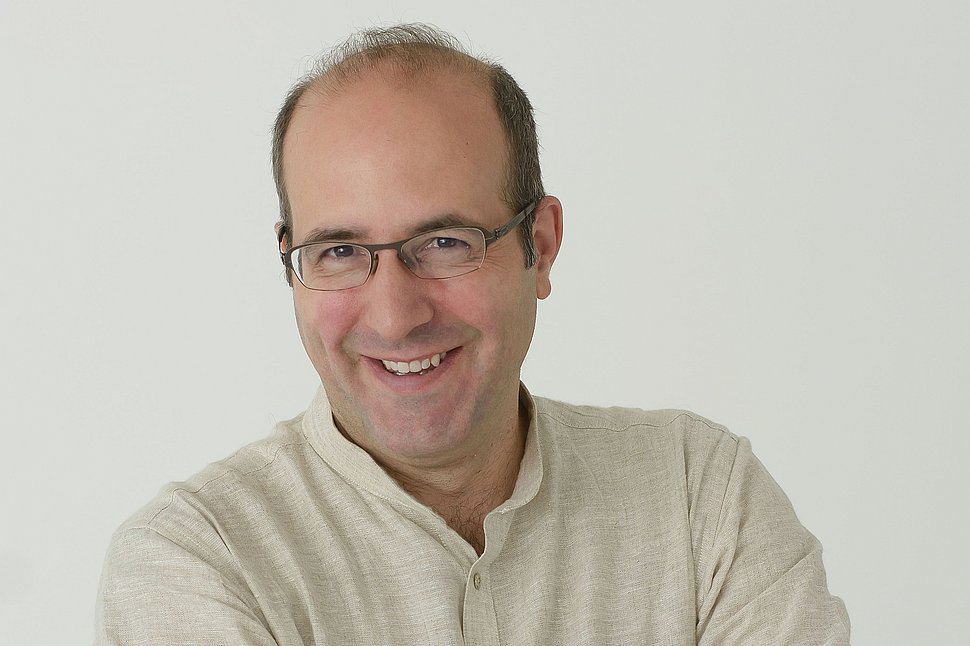
"“Prodigieuse lampe tempête! […] Lorsque je la vis, suspendue à une branche de figuier, brûler, brillante, avec la sérénité d’une lampe d’autel, j’en oubliai ma soupe au fromage, et je décidai de consacrer ma vie à la science…” Marcel Pagnol.

